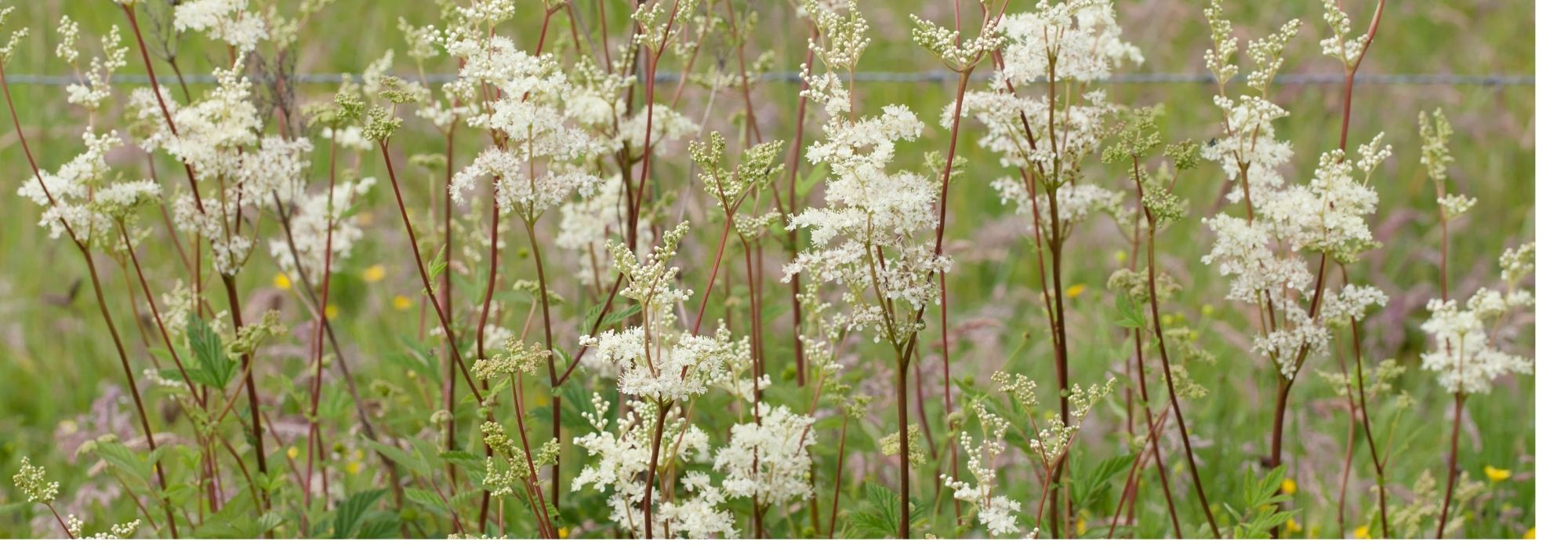
Choosing a meadowsweet
Our buying guide to help you find the one you need!
Contents
Whatever their origin, filipendulas, commonly known as meadowsweet, are generally flowering plants of flood meadows that prefer cool, moist soils. In the garden, it is essential to plant them where they will have plenty of water or to ensure regular watering. They thrive in sunny or partially shaded positions, avoiding deep shade. What characterises them is their abundant, misty flowering supported by slender stems and their lovely deciduous foliage, finely cut and lush. These are very interesting and low-maintenance perennial floriferous plants, long recognised for their medicinal and aromatic properties. Depending on their characteristics, the gardener can plant them in various locations in the garden: at the back of a shrub border for the taller varieties, as some can reach over 2.5 metres, like the spectacular and highly ornamental Filipendula camtschatica, or conversely at the edge for the smaller varieties. Here are some valuable tips for selecting them from our collection based on their different criteria.
According to height
- Small – 40 to 80 cm
The smallest varieties can be planted in the ground at the front of a flower bed, either isolated or in groups to enhance the remarkable effect of their leaves and beautiful airy flowering: common meadowsweet – Filipendula vulgaris is a small rhizomatous plant bearing lovely bright white inflorescences on slender stems. Filipendula ‘Kahome’ forms clumps about thirty centimetres tall and is covered in medium pink flowers from June to August. Like its relatives, it prefers a sunny or semi-shaded position. Filipendula palmata ‘Nana’ – the dwarf form of the palmate meadowsweet – has large, bright green leaves, and its slightly trailing flowers are a deep pink. Purple meadowsweet, Filipendula purpurea, features large, finely cut foliage and bright fuchsia flowers from June to July. The white variety – Filipendula purpurea ‘Alba’ – has numerous small flowers grouped in airy corymbs. Among the smallest meadowsweets, you will also find Filipendula purpurea ‘Elegans’, with very fragrant soft pink flowers, Filipendula ulmaria ‘Aurea’, very bright with its white flowers and golden foliage, ulmaria ‘Variegata’, with variegated foliage, or ulmaria ‘Rosea’, with light pink flowers. Finally, the hybrid ‘Red Umbrellas’, equally hardy, boasts beautiful finely cut light green leaves with purple veins, creating a stunning graphic effect!

Filipendula vulgaris, palmata ‘Nana’, purpurea and ulmaria ‘Aurea’
- Medium – 80 cm to 1.20 m
Only Filipendula palmata falls into this intermediate category. Like the dwarf variety, its dark pink flowers bloom from June to August, and its abundant palmate leaves are a deep green. It emits a light, slightly sweet fragrance.

Filipendula palmata
- Large – 1.20 m to 2.50 m
This category includes the largest meadowsweets, such as Filipendula rubra ‘Venusta’, whose superb candy-pink flowers bloom in lovely airy plumes. It grows quickly to reach 1.80 m in flower and forms a beautiful spreading clump. The species ulmaria and ulmaria ‘Plena’ will also find their place in the background as they reach heights of 1 m to 1.20 m. Their white flowers stand out against their beautiful deep green foliage.
Finally, Filipendula camtschatica, the giant, can reach 2.50 m! Its majestic white flowers create beautiful wild garden scenes and quickly vegetate empty spaces.

Filipendula ulmaria ‘Plena’, camtschatica and ulmaria
According to the colour of the flowers
Always elegant and wild, the Meadowsweet can offer a pink flowering that ranges from pale to vibrant or white.
- White-flowered Filipendulas
The varieties of the genus ulmaria, such as Filipendula ulmaria, ulmaria ‘Aurea’, ulmaria ‘Plena’, and ulmaria ‘Variegata’ all have a fluffy white flowering, bringing brightness to the garden. Filipendula purpurea ‘Alba’, Filipendula vulgaris, and Filipendula camtschatica also feature immaculate flowers.
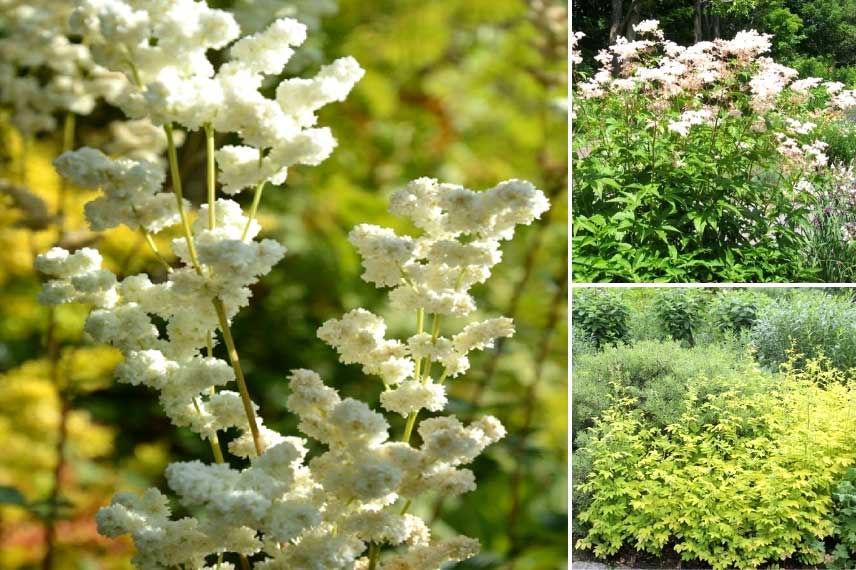
Filipendula ulmaria ‘Plena’, purpurea ‘Alba’ and ulmaria ‘Aurea’
- Pink-flowered Filipendulas
In this category of pink Meadowsweets, you will find Filipendula ‘Kahome’, the stunning Filipendula purpurea , and purpurea ‘Elegans’ with lovely pale pink flowers, as well as Filipendula rubra ‘Venusta’ with cotton candy-coloured blooms! The species palmata and palmata ‘Nana’, which are more compact with a more intense flowering, ulmaria ‘Rosea’, and finally the hybrid ‘Red Umbrellas’ whose delicate pale pink flowers stand out against the highly decorative purple-veined foliage.
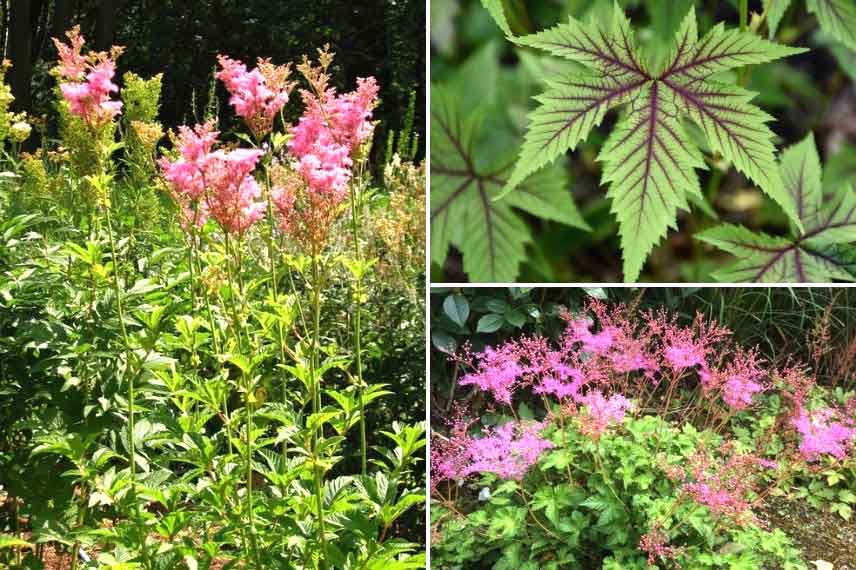
Filipendula rubra ‘Venusta’, ‘Red Umbrellas’ and ‘Kahome’
Discover other Filipendula
View all →Available in 0 sizes
Available in 0 sizes
Available in 0 sizes
Available in 0 sizes
Available in 2 sizes
Available in 0 sizes
Available in 0 sizes
Available in 1 sizes
Available in 1 sizes
Available in 1 sizes
Depending on the type of soil
Meadowsweet can adapt to two types of soil: rich, light clay-loam soils, as well as heavier, compact clay soils. Beyond aesthetic considerations, this factor is crucial for successfully cultivating them and seeing them thrive! Some can easily accept both types of soil. In any case, avoid overly dry soils that are unsuitable for them.
- Filipendula for heavy (clay) soil
In our collection, you will find numerous species and varieties of meadowsweet that can flourish in clay soil, where many other perennials would struggle to survive. Filipendula ‘Kahome’, palmata, purpurea and purpurea ‘Elegans’ as well as Filipendula rubra ‘Venusta’ thrive in heavy soil. Similarly, the species ulmaria with its varieties Aurea, Plena and Variegata, can be associated with the species camtschatica, ulmaria ‘Rosea’ and the hybrid ‘Red Umbrellas’ in clay soil.

Filipendula purpurea ‘Elegans’ and ‘Red umbrellas’
- Filipendula for rich, light (clay-loam) soil
For lighter soils, we recommend Filipendula ‘Kahome’ and palmata. The various varieties of the species Purpurea and Ulmaria also thrive there without issue, as do Filipendula rubra ‘Venusta’, Filipendula vulgaris, camtschatica and the hybrid ‘Red Umbrellas’.
- Subscribe!
- Contents

































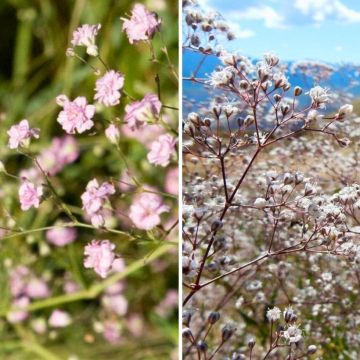

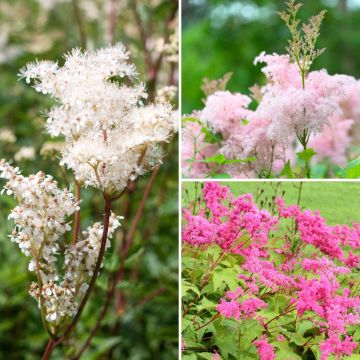
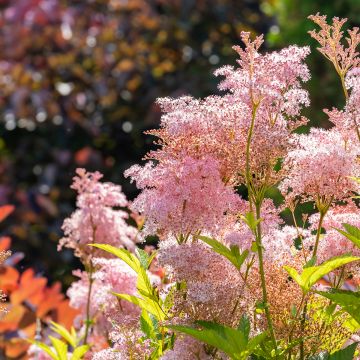
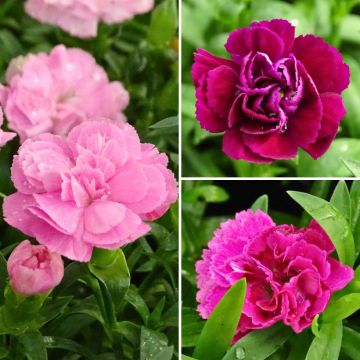
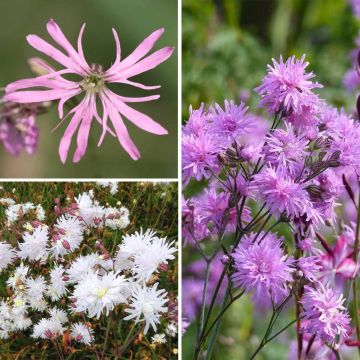
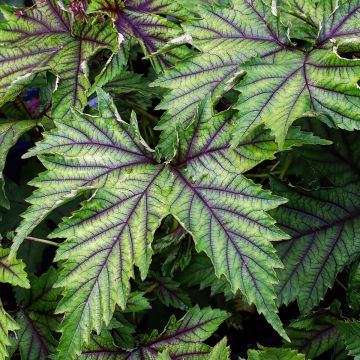
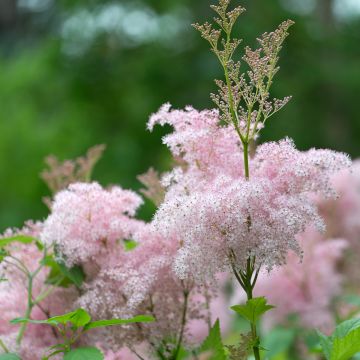
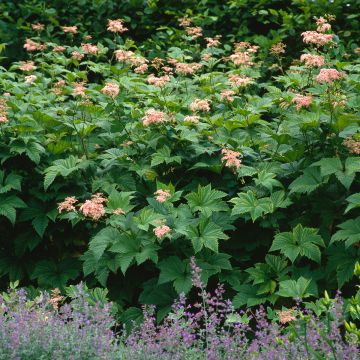
Comments